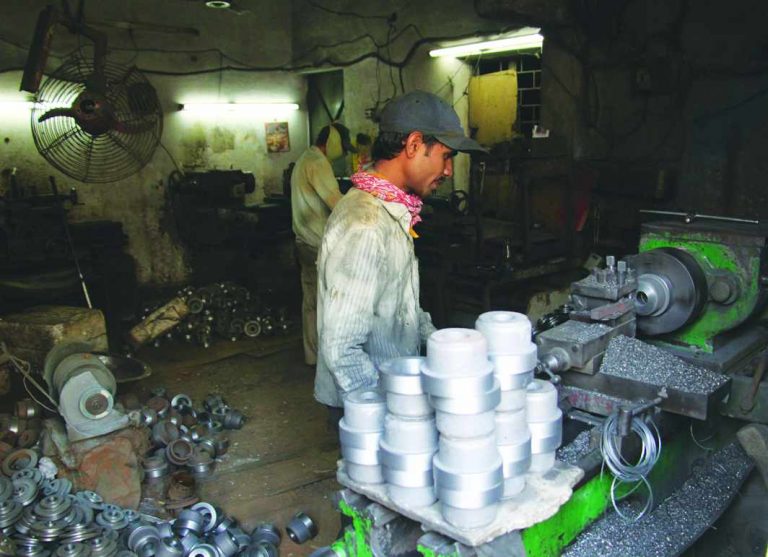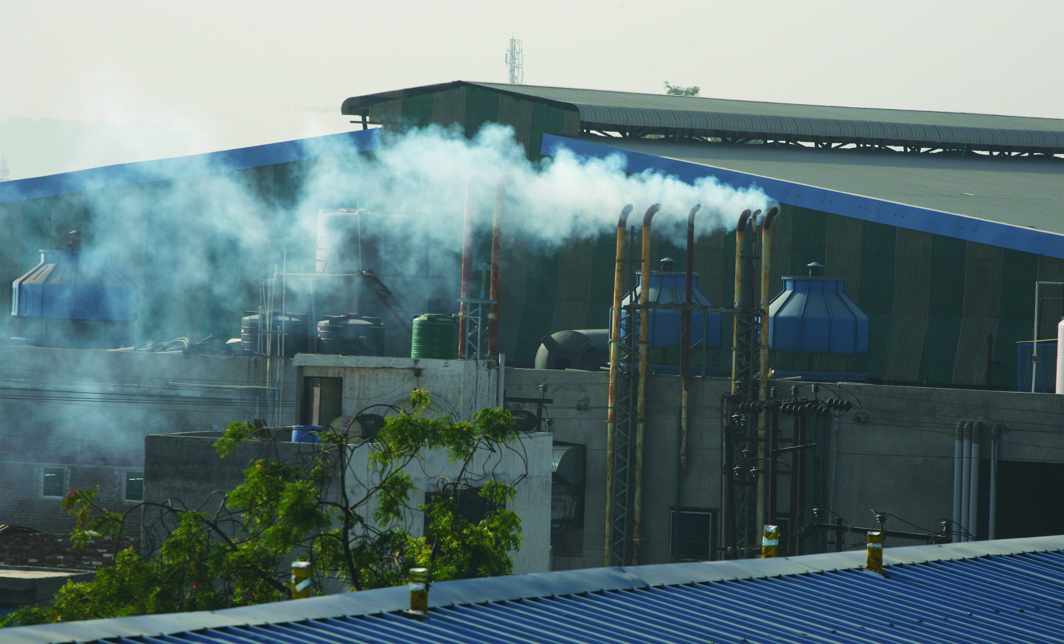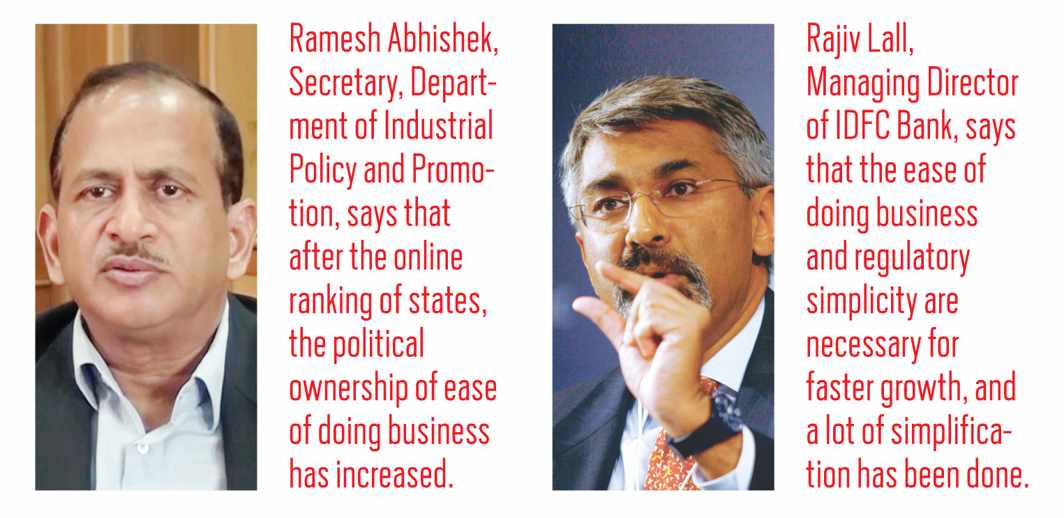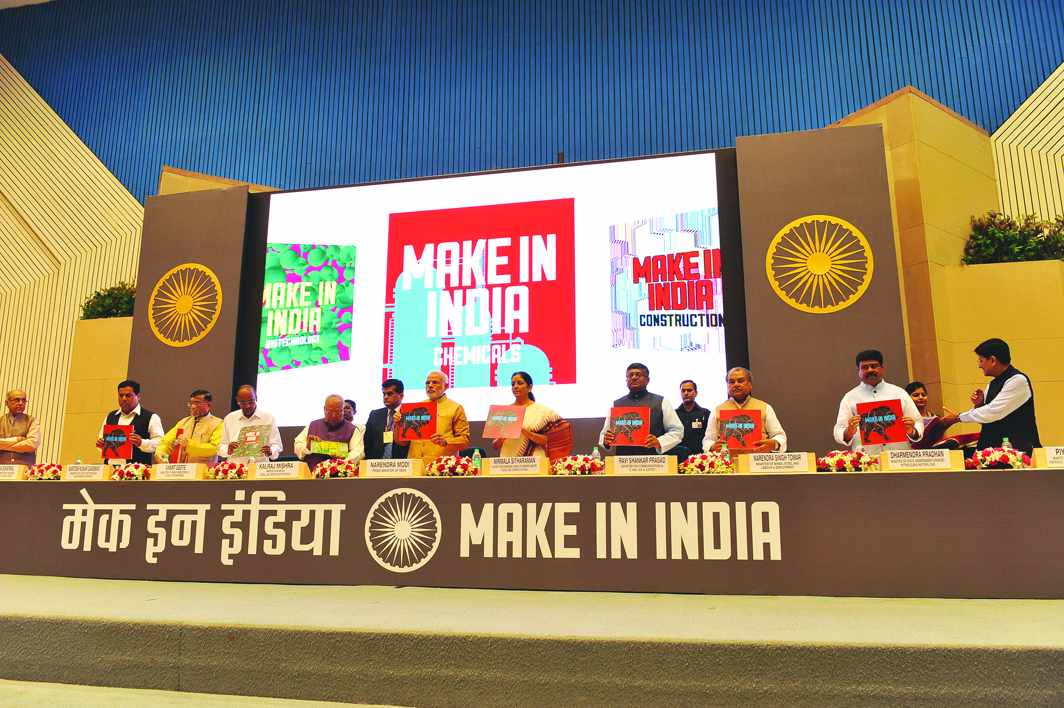
Above: With firms trying to cut corners, most factory workers endure inhospitable conditions. Photo: Bhavana Gaur
Despite the central and state governments’ efforts at simplifying compliances and issuing faster approvals, many manufacturing enterprises reported little or no change
~By Vivian Fernandes
If advertising is to be believed, there has been a regime-change in India since Narendra Modi took over as prime minister. Those who believe that civil liberties are being crimped, would endorse the veracity of that claim. But the government says things are changing for the better in the economic sphere. India is touted as the fastest-growing economy, albeit one that has difficulty creating jobs. “We are now engaged in transformational change,” stated Nirmala Sitharaman, then Minister of State for Commerce and Industry.
If that is true, it is not showing. A survey of 3,276 manufacturing enterprises by IDFC Institute on ease of doing business found 59 percent of them saying that the regulatory environment for setting up businesses was unchanged or had worsened. Thirty-eight percent said that the conditions had improved.
The study was commissioned by NITI Aayog, the successor to the erstwhile Planning Commission and was released on August 28. Unlike the World Bank’s ranking of countries on ease of doing business, this one does not cover services. It obtained feedback from enterprises across 104 districts in all states, except Arunachal Pradesh, Mizoram, Andaman & Nicobar Islands and Lakshadweep. The World Bank surveyors talk to industry leaders, chartered accountants and lawyers in Delhi and Mumbai; they do not quiz enterprises at all.
An interesting finding of the survey is that labour-intensive industries are less likely to use self-certification under the Minimum Wages Act and the Payment of Wages Act than capital-intensive enterprises. More of them reported that finding skilled workers was a “major or very severe obstacle” to doing business.
Labour-intensive industries reported that finding skilled workers was a “major or very severe obstacle” to doing business.
The share of such enterprises reporting difficulty in hiring contract labour was a third higher than respondents in power-intensive industries. They also complained of greater difficulty in laying-off workers.
PROBLEM AREAS
Overall, they reported more difficulty in setting up business than those in other industries. A larger proportion of power-intensive industries said they had difficulty in getting an electricity connection. Most of them also complained of outages. Scarcity of water troubled many of them.

Since India is dominated by very small enterprises (those employing less than eight workers) is it possible that the preponderance of such firms in labour-intensive sectors constrains their ability to cope with laws and rules, said Arun Maira, a member of the last Planning Commission. But IDFC Institute said it had taken the sample from enterprises registered under the Factories Act, and each employed 20 or more persons. So enterprises in the informal sector were ignored. In all, 1,846 were labour-intensive firms belonging to 12 sectors, and 1,430 were power-intensive enterprises from nearly 11 industries.
On the basis of the responses, it was calculated that the average time taken to set up a business in India was 118 days with wide variations. In Tamil Nadu and Andhra Pradesh, the time varied between 60 and 70 days; in Kerala and Assam, it was upwards of 200 days.
The top 25 percent of the respondents said it took them between 150 and 320 days to get land allotted by the government. The average time taken was 156 days. The Himachal administration took the least amount of time, just 23 days. Since the process of obtaining land and construction permits was vitiating the environment for establishing enterprises, Ramesh Abhishek, Secretary, Department of Industrial Policy and Promotion (DIPP) said it might help to do away with them. Applicants should be able to upload their site maps; these will be accepted only if the compliances are observed.
Random inspections would help detect false declarations. Chhattisgarh takes just five days to give construction permits, he said.
Summing up the report, Rajiv Lall, Managing Director of IDFC Bank, said that the ease of doing business and regulatory simplicity were necessary for faster growth. India was moving in the right direction on easing, he said, without stating that the pace could quicken. A lot of simplification had been done, but only 20 percent of the respondents who had started operations during or after 2014 said that they had used the single-window system, which is one of the 98 reforms that state governments had agreed to undertake as part of the “Make in India” initiative of 2014.This spoke of the need for better overall communication.
The study obtained feedback from enterprises across 104 districts in all states, except Arunachal, Mizoram, Andamans and Lakshadweep.
Obtaining land was a big problem and it forced firms to remain small. Addressing the extreme informality of Indian businesses was a challenge. Ninety-five percent of enterprises in India employed 2 or 3 persons. Perhaps they wished to avoid dealing with the government, and preferred to remain unorganised, he said.
DIPP RANKINGS
In order to improve its continued low score in the World Bank’s rankings on ease of doing business, DIPP has begun its own rankings. India ranked 130 in 2017 and 2016, 142 in 2015, 134 in 2014 and 132 in 2013 in the World Bank rankings. DIPP based its findings by talking to secretaries to state governments, (and as Sitharaman observed, they have an obvious interest in prettifying their state’s score).
Abhishek found that “after the online ranking of states, the political ownership of ease of doing business has increased”. There was healthy competition among states. Sometimes they wanted others pulled down a couple of notches and gave reasons.
But there was cooperation too. Andhra was helping Kerala to improve its business environment, and Uttarakhand was assisting Mizoram. In the assessment of states implementing business reforms, Gujarat topped in 2015. In 2016, Andhra Pradesh took pole position. This year, DIPP will take feedback from business enterprises for whom the easing is being done.
REASON FOR RED TAPE
Abhishek said that the obduracy of the bureaucracy alone may not be the reason for red tape. Often, government departments do not have the capacity or skills to cope. When the trademarks office was short-staffed, it used to take 13 months to register one; now it takes about a month.

The customs office has gone completely online, but at one time found itself short of printers and scanners. PAN and TAN numbers are now given to companies in one day after a back office was set up in Manesar in Haryana to quickly process such applications, and to avoid backlog.
“This is an Indian exercise,” said Ravi Shankar Prasad, Minister for Law and Justice & Information Technology, as if western countries conspired through the World Bank to deter investments to India by giving it a low rank.
“When we rank high in innovation and competitiveness how is it that we are shown low down in other areas?” he asked.
More than half of the respondents saying things have not changed or have worsened since 2014 seems to have chafed the government. It issued a clarification through the Press Information Bureau on August 29 that the enterprise survey does not reflect the views of the government or NITI Aayog and does not take into account the reforms that have happened after the survey was completed in April 2016.
Mercifully, it refrained from saying the respondents were wrong or the surveyors were biased!

